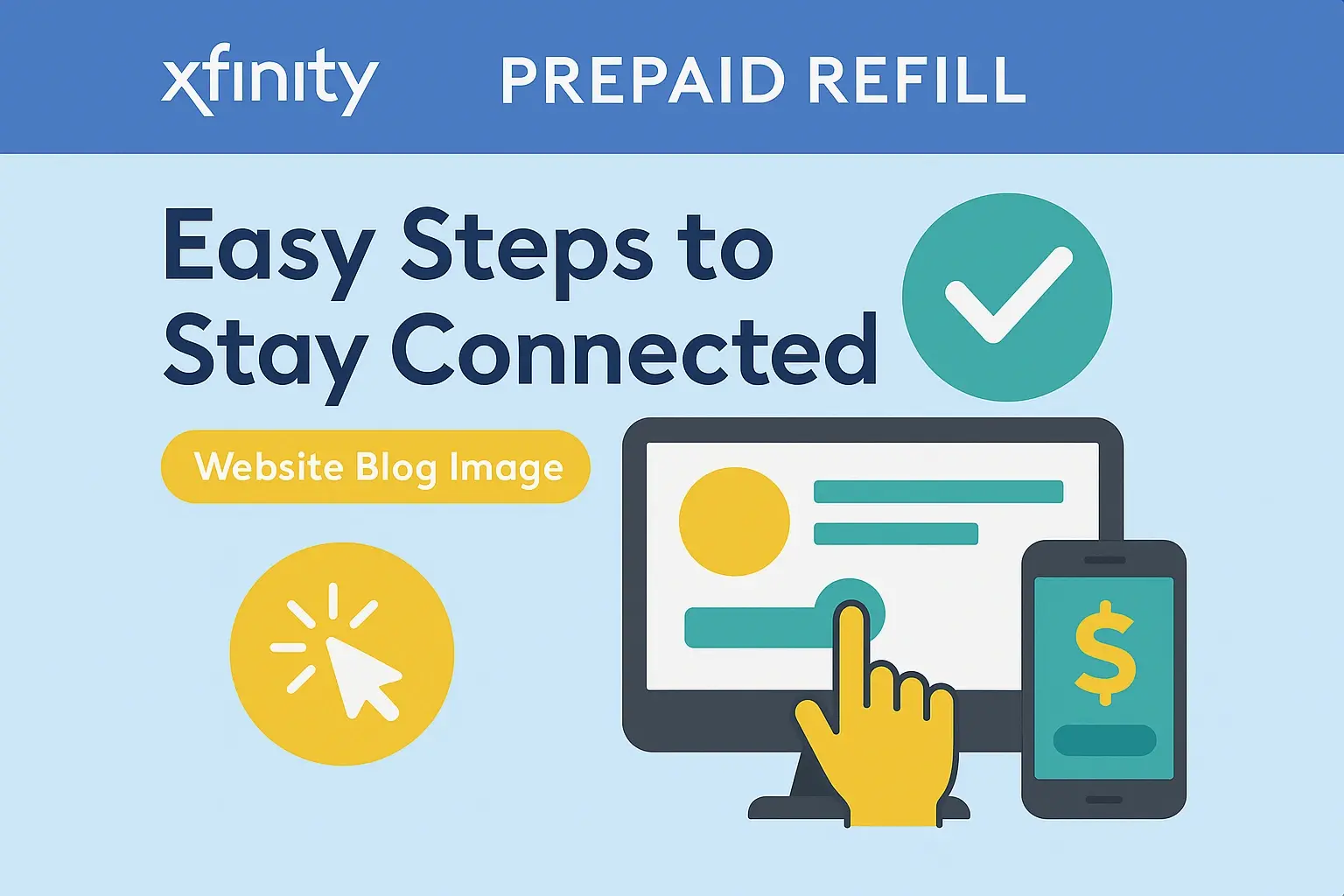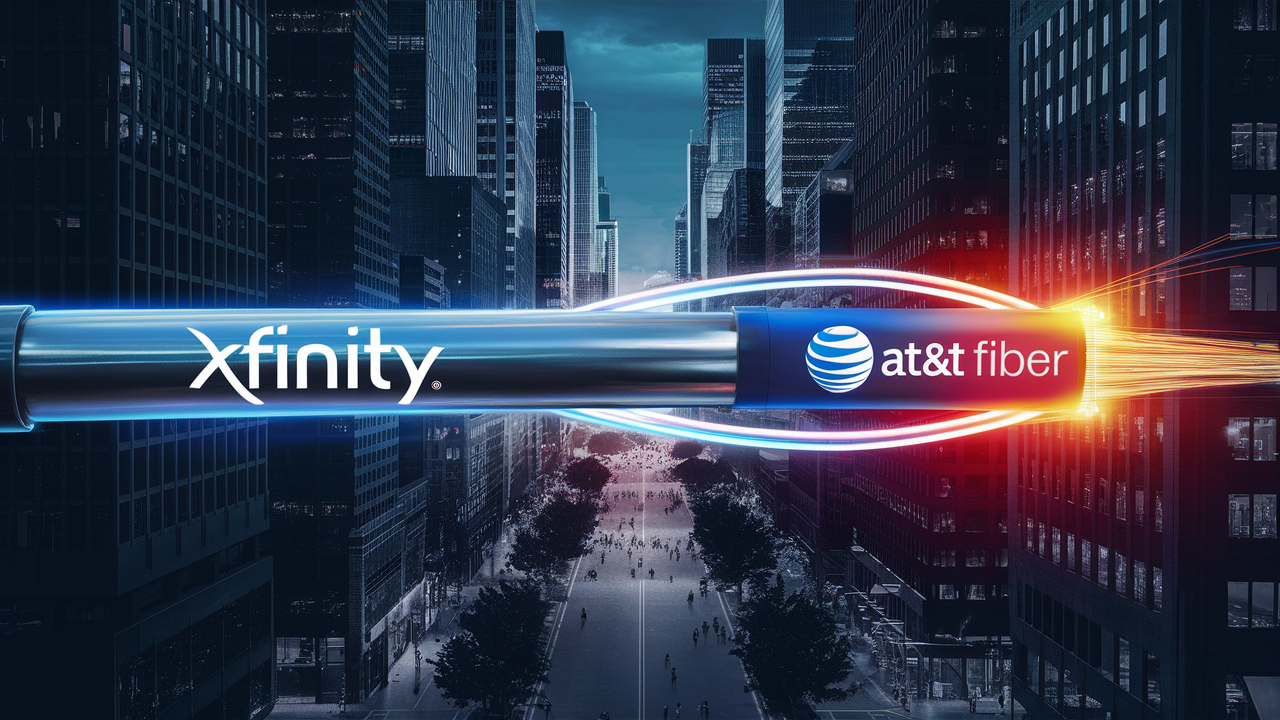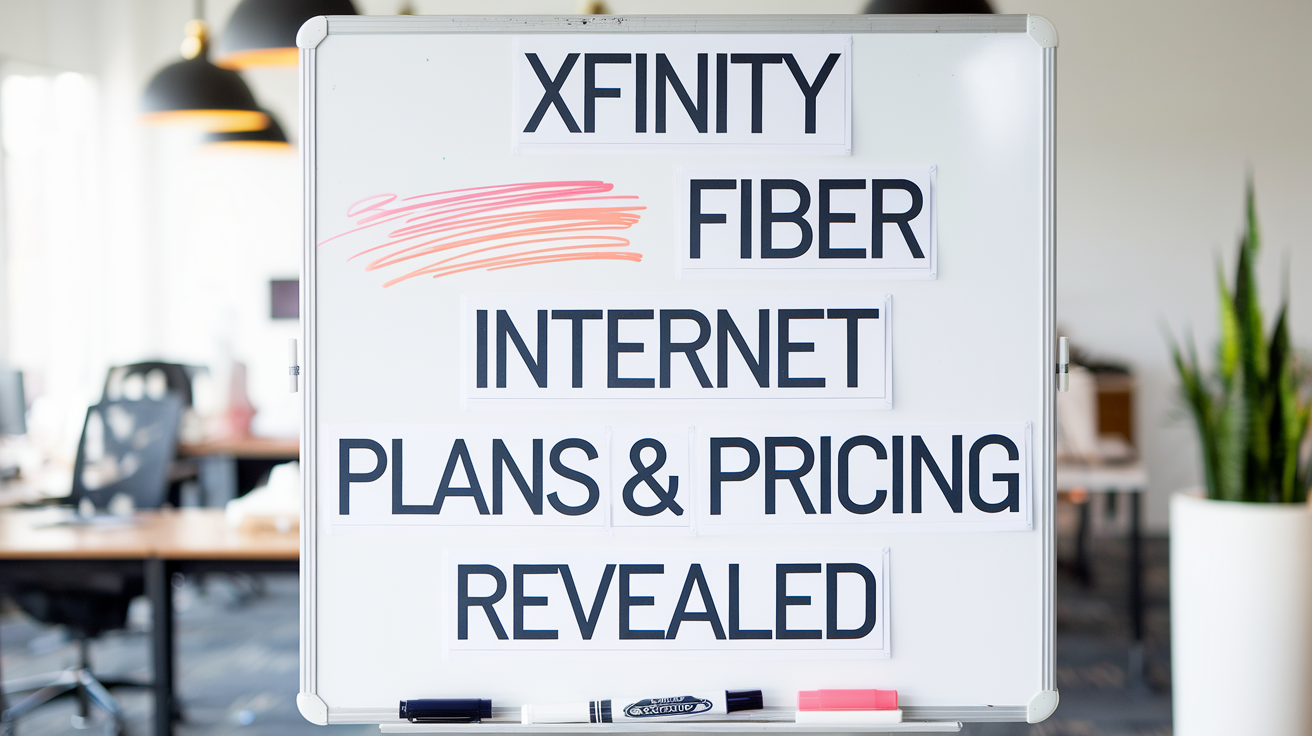How To Return Xfinity Equipment?

Returning Xfinity equipment can seem daunting, but this comprehensive guide simplifies the process. We'll walk you through every step, from understanding what needs to be returned to choosing the most convenient method, ensuring you avoid unnecessary charges and complete your task efficiently. Get ready to return your Xfinity gear with confidence.
Understanding Xfinity Equipment Returns
When your Xfinity service contract ends, or if you're upgrading your equipment, you'll inevitably face the task of returning your leased devices. Xfinity, like most service providers, requires you to return their equipment to avoid ongoing rental fees and potential penalties for unreturned items. This process, while straightforward, requires attention to detail to ensure a seamless experience. Understanding the 'why' and 'how' of these returns is the first step towards avoiding frustration and unexpected charges.
In 2025, Xfinity continues to refine its equipment return policies to streamline the process for millions of customers. The primary goal is to ensure that leased equipment is accounted for, whether it's returned for refurbishment, reassignment to another customer, or recycling. For customers, this means a clear understanding of which items are theirs to keep and which must be sent back. Failing to return the correct items can lead to charges that often exceed the perceived value of the equipment, making it crucial to get this right. This guide aims to demystify the entire Xfinity equipment return procedure, covering everything from identifying the necessary items to confirming their successful return.
What Equipment Needs to Be Returned?
The most common question customers have is precisely what Xfinity equipment they are obligated to return. Generally, any equipment that you lease directly from Xfinity needs to be returned. This typically includes:
- Modems and Routers: These are the devices that provide your internet connection. Xfinity often provides a gateway device that combines both modem and router functionality.
- Cable Boxes/Set-Top Boxes: These are essential for accessing Xfinity's cable TV services, including DVRs (Digital Video Recorders).
- Voice Modems: If you subscribe to Xfinity Voice (landline phone service), you'll likely have a separate modem for this service.
- Xfinity Remotes: While sometimes overlooked, remotes that come with your cable boxes are also leased equipment and should be returned.
- Power Cords and Adapters: All associated power cords, adapters, and remote controls that came with the leased equipment must be returned as well.
What you generally do NOT need to return:
- Equipment you purchased: If you bought your own modem or router and it's compatible with Xfinity, you do not need to return any Xfinity-provided equipment unless it was specifically leased.
- Xfinity Wi-Fi Hotspot devices: These are typically not leased in the same way as core service equipment.
- Old or damaged equipment you replaced yourself: If you upgraded your equipment by purchasing a new device from a retail store (and it's compatible), you wouldn't return the old Xfinity-leased unit unless instructed to do so.
To be absolutely certain, always refer to the official equipment return instructions provided by Xfinity when you initiate a service change or cancellation. These instructions will detail the specific items you need to send back. In 2025, Xfinity continues to provide clear documentation through your online account or via email to prevent confusion.
Why Returning Equipment is Important
The importance of returning Xfinity equipment extends beyond mere compliance. There are tangible consequences for both Xfinity and the customer if equipment isn't returned properly and promptly. Understanding these reasons can motivate customers to prioritize this task.
1. Avoiding Unnecessary Charges: This is the most significant reason for customers. If you fail to return leased equipment, Xfinity will charge you for the full retail value of the unreturned items. These charges can be substantial, often running into hundreds of dollars per device. For example, a high-end Xfinity gateway modem might cost upwards of $200 to replace if not returned. In 2025, these replacement fees remain a primary concern for customers who are not diligent with their returns.
2. Preventing Service Disruptions: While less common for standard returns, in some cancellation scenarios, failure to return equipment might be linked to ongoing service access or account status, potentially leading to complications if not resolved.
3. Environmental Responsibility: Xfinity, like many tech companies, has a responsibility to manage its electronic waste. Returning equipment allows them to refurbish functional devices for reuse, salvage valuable components, or ensure proper recycling of materials, minimizing environmental impact. This is an increasingly important consideration for consumers in 2025, who are more aware of corporate sustainability practices.
4. Account Closure and Final Billing: A complete equipment return is often a prerequisite for the final closure of your Xfinity account and the issuance of your final bill. Any outstanding equipment charges will appear on this bill, so ensuring a clean return helps finalize your account status accurately.
5. Resource Management for Xfinity: For Xfinity, returned equipment is a valuable resource. Functional modems, routers, and cable boxes can be cleaned, tested, and redeployed to new customers, reducing the need for manufacturing new devices and lowering operational costs. This efficiency helps Xfinity maintain competitive pricing for its services.
In essence, returning your Xfinity equipment is a critical step in concluding your service agreement, protecting your finances, and contributing to responsible resource management.
Methods for Returning Xfinity Equipment
Xfinity offers several convenient methods for returning leased equipment. The best option for you will depend on your location, schedule, and preference. Each method has its own set of instructions and benefits.
Returning to an Xfinity Store
This is often the most direct and preferred method for many customers. Xfinity retail stores are equipped to accept returned equipment, process the return immediately, and provide you with a receipt.
Steps:
- Locate an Xfinity Store: Visit the Xfinity Store locator on their website to find the nearest store. Note that these are distinct from authorized retailers or service centers.
- Gather Your Equipment: Collect all the leased Xfinity devices, including modems, routers, cable boxes, remotes, and their power cords. Ensure you have everything listed on your return authorization.
- Visit the Store: Bring the equipment to the Xfinity Store. You don't typically need an appointment, but it's wise to check store hours.
- Hand Over Equipment: A store associate will assist you. They will scan the equipment and process the return in their system.
- Get a Receipt: Crucially, obtain a printed or emailed receipt confirming the return of your equipment. This receipt is your proof of return and is vital if any discrepancies arise later. The receipt should list the serial numbers of the returned items.
Pros:
- Immediate confirmation of return.
- No packing or shipping required.
- Direct interaction with an Xfinity representative.
- Receipt serves as immediate proof.
Cons:
- Requires travel to a physical store.
- Store hours may be limited.
- Can sometimes involve waiting times.
In 2025, Xfinity stores are well-staffed to handle returns, making this a reliable option for most.
Shipping Equipment Back to Xfinity
If visiting a store isn't feasible, Xfinity provides a prepaid shipping option. This involves packing your equipment and sending it back via mail.
Steps:
- Request a Return Kit: When you arrange your equipment return (often initiated through your Xfinity account online or by phone), Xfinity will usually send you a prepaid shipping box with a return label. If they don't send a kit, you may need to print a label yourself.
- Pack Your Equipment: Carefully pack all the leased equipment into the provided box. Use original packaging if possible, or ensure items are well-protected to prevent damage during transit. Include all accessories (cords, remotes).
- Affix the Label: Securely attach the prepaid return shipping label to the outside of the box. Ensure it's clearly visible.
- Drop Off the Package: Take the packed box to the designated shipping carrier (usually USPS or FedEx, depending on the label provided).
- Keep the Tracking Number: Obtain a receipt with a tracking number from the shipping carrier. This is your proof of shipment and allows you to monitor the package's progress.
Pros:
- Convenient if you can't visit a store.
- Prepaid shipping saves you money.
- Tracking provides visibility.
Cons:
- Requires packing and dropping off the package.
- Risk of damage during transit if not packed properly.
- Confirmation of return is delayed until Xfinity receives and processes the shipment.
- Potential for lost packages if tracking isn't monitored.
For 2025, Xfinity emphasizes the importance of using their provided kits and labels to ensure proper tracking and processing.
Dropping Off at a UPS Store
In many areas, Xfinity partners with The UPS Store to offer a convenient drop-off option. This method combines the ease of dropping off with the efficiency of a major shipping carrier.
Steps:
- Obtain Return Authorization: Ensure you have authorization from Xfinity to return your equipment. This might come with a specific barcode or reference number.
- Pack Your Equipment: Pack all leased equipment securely, including accessories.
- Visit a UPS Store: Take the packed equipment to any authorized UPS Store.
- Hand Over the Package: Inform the UPS Store associate that you are dropping off Xfinity equipment for return. They will scan the package and provide you with a receipt.
- Keep Your Receipt: The UPS Store receipt is your proof of drop-off and often includes a tracking number.
Pros:
- Numerous UPS Store locations make it accessible.
- UPS handles the shipping and tracking.
- Often quicker than waiting for a return kit.
Cons:
- Requires packing the equipment.
- Confirmation of receipt by Xfinity still takes time.
- Ensure the UPS Store is authorized for Xfinity returns.
This option is widely available and often recommended by Xfinity customer service in 2025.
Preparing Your Equipment for Return
Proper preparation is key to a smooth equipment return and helps prevent potential disputes or charges. Taking a few extra minutes to prepare your devices can save you a lot of hassle.
1. Identify All Leased Equipment: As mentioned earlier, make a definitive list of all equipment you are leasing from Xfinity. Check your Xfinity account online or your past service agreements for an inventory. Common items include modems, routers, gateways, set-top boxes, DVRs, and remotes.
2. Gather All Accessories: Don't forget the essential accessories. This includes:
- Power cords and adapters for each device.
- Remote controls associated with cable boxes.
- Ethernet cables (if provided by Xfinity and part of the lease).
- HDMI cables (less common to be leased, but check if provided).
Missing accessories can sometimes result in partial charges, so it's best to return everything that came with the original equipment.
3. Factory Reset (Optional but Recommended): While Xfinity technicians will wipe data upon receipt, performing a factory reset on modems and routers can be a good practice for data privacy. Consult your device's manual or Xfinity's support site for instructions on how to do this. For cable boxes, this is generally not necessary.
4. Clean the Equipment: Give the devices a quick wipe-down. While not strictly required, it shows care and can make the process more pleasant for the receiving party.
5. Securely Pack the Items:
- For Store/UPS Drop-off: Pack items snugly in a sturdy box. Use bubble wrap or packing paper if you have it, especially for fragile components like screens on DVRs.
- For Shipping Kit: If Xfinity provides a box, use it. Ensure items don't rattle excessively.
6. Document Everything: Before you pack, take clear photos of all the equipment you are returning, including serial numbers if visible. If shipping, take photos of the packed box before sealing it. This documentation is your ultimate backup.
7. Keep Your Return Confirmation: Whether it's a store receipt, a UPS drop-off slip, or a shipping carrier's tracking confirmation, keep this document in a safe place until you are certain your account is settled and no further charges are pending. In 2025, digital receipts are common, so ensure you save them to your email or cloud storage.
By following these preparation steps, you significantly reduce the chances of encountering issues with your Xfinity equipment return.
What Happens After You Return Equipment?
Once you've successfully returned your Xfinity equipment, there are a few subsequent steps and confirmations to look out for. Understanding this post-return process ensures that the return is fully processed and reflected on your account.
1. Processing by Xfinity:
- In-Store Returns: The return is usually processed immediately in the system at the Xfinity Store. You should see the equipment removed from your account within a few business days, reflected on your next billing statement.
- Shipped Returns: When Xfinity receives your package (via UPS or mail), their warehouse will inventory the items. This process can take anywhere from a few days to a couple of weeks, depending on shipping times and internal processing speeds.
2. Account Update:
- Once Xfinity processes the return, the leased equipment will be removed from your active account inventory. This means you will no longer be charged monthly rental fees for those specific devices.
- The update should appear on your next billing statement after the return is processed. Look for a line item indicating the removal of equipment charges.
3. Final Bill:
- If you are canceling service, the final bill will reflect all charges up to the cancellation date and confirm the return of equipment. If there were any outstanding charges for unreturned or damaged equipment, they would appear here.
- It's crucial to review your final bill carefully to ensure all equipment charges have been removed and no unexpected fees have been added.
4. Monitoring Your Account:
- Log in to your Xfinity account online periodically after returning the equipment. Check the "My Equipment" section to see if the devices have been removed from your account.
- If you used a shipping method, track your package using the tracking number. Once it shows delivered, allow a week or two for Xfinity's system to update.
5. Contacting Xfinity if Issues Arise:
- If you don't see the equipment removed from your account after a reasonable processing time (e.g., 2-3 weeks for shipped returns), or if you receive a bill with unexpected equipment charges, contact Xfinity customer service immediately.
- Have your return receipt or tracking information readily available when you call. This documentation is your proof and will be essential in resolving any disputes.
In 2025, Xfinity's customer portal is designed to provide real-time updates, but vigilance on the customer's part is still recommended to ensure a complete and accurate account closure or update.
Common Issues and Troubleshooting
While the Xfinity equipment return process is generally smooth, some common issues can arise. Knowing how to troubleshoot these problems can save you time and prevent unnecessary charges.
Unauthorized Charges on Bill
Issue: You receive a bill with charges for equipment you've already returned.
Troubleshooting:
- Check Your Records: Ensure you have your return receipt or tracking confirmation. This is your primary evidence.
- Verify Return Date: Confirm the date you returned the equipment and compare it to your billing cycle. Sometimes, a return processed late in a billing cycle might appear on the next bill.
- Contact Xfinity Customer Service: Call Xfinity and explain the situation. Provide your return documentation (receipt number, tracking number, date of return).
- Escalate if Necessary: If the initial representative cannot resolve the issue, ask to speak with a supervisor or a billing specialist.
- Allow Time: Sometimes, it takes a billing cycle or two for the system to fully update after a dispute.
Lost or Damaged Equipment Claims
Issue: Xfinity claims equipment was not returned or was returned damaged.
Troubleshooting:
- Proof of Return: Your return receipt or tracking confirmation showing delivery to Xfinity is crucial.
- Photos: If you took photos of the equipment before returning it, especially if it was shipped, this can help prove its condition.
- Shipping Insurance: If you shipped via a carrier other than Xfinity's prepaid service, insurance might be an option.
- Xfinity's Process: Understand Xfinity's policy on damaged equipment. Minor cosmetic wear is usually acceptable, but significant damage might incur fees.
- Dispute the Charge: If you have proof of return and believe the claim is unfounded, dispute the charge with customer service.
Difficulty Finding Return Location
Issue: You can't find a convenient Xfinity Store or UPS Store for returns.
Troubleshooting:
- Check Xfinity Website: Use the official Xfinity Store locator and search specifically for "Xfinity Retail Stores."
- Confirm UPS Partnership: Verify on Xfinity's site or by calling customer service which UPS Stores are authorized for Xfinity returns. Not all UPS Stores might participate.
- Request a Shipping Kit: If no convenient drop-off locations exist, request a prepaid shipping kit from Xfinity. This is a reliable fallback option.
- Contact Customer Service: If you're struggling, reach out to Xfinity support. They can often provide specific guidance or arrange an alternative solution.
Missing Return Label or Box
Issue: Xfinity did not provide a return label or box when expected.
Troubleshooting:
- Check Your Account: Log in to your Xfinity account online. The option to print a return label or request a kit is often available there.
- Contact Xfinity: Call customer service and request that a shipping label and/or box be mailed to you.
- Print Your Own Label (If Permitted): In some cases, Xfinity might allow you to print a label directly from their website.
- Use Your Own Packaging: If Xfinity sends a label but no box, use a sturdy box of your own and ensure the label is securely attached.
In 2025, Xfinity aims to make these processes smoother, but proactive communication with customer service is key when issues arise.
Tips for a Smooth Return Process
To ensure your Xfinity equipment return goes off without a hitch, consider these practical tips. They are designed to save you time, prevent errors, and provide peace of mind.
1. Act Promptly: Don't delay returning your equipment after service cancellation or upgrade. The sooner you return it, the sooner you'll stop being charged for it, and the less likely you are to misplace items.
2. Read All Communications: Pay close attention to emails and mail from Xfinity regarding equipment returns. They contain specific instructions, deadlines, and lists of what to return.
3. Document Everything: This cannot be stressed enough. Take photos of the equipment before you pack it, keep receipts, and note down serial numbers. This documentation is your safety net.
4. Use Official Channels: Always use the return methods provided or approved by Xfinity (Xfinity Stores, UPS Stores, or their provided shipping kits). Using unofficial methods can lead to non-recognition of the return.
5. Verify Equipment List: Double-check the list of equipment Xfinity requires you to return against what you have. If you're unsure about a specific item, contact Xfinity.
6. Pack Carefully: Whether shipping or dropping off, ensure equipment is packed securely to prevent damage during transit. This protects you from potential damage claims.
7. Get a Receipt and Tracking: Always obtain proof of return. For in-store returns, it's a receipt. For shipping, it's a tracking number. Keep this until your account is fully settled.
8. Understand Fees: Familiarize yourself with Xfinity's unreturned equipment fees before you return items. This knowledge empowers you to ensure you aren't overcharged.
9. Review Your Final Bill: Meticulously check your final Xfinity bill to confirm all equipment charges have been removed and no erroneous fees have been added.
10. Set Reminders: If you're shipping equipment, set a calendar reminder to track the package and follow up if it doesn't show as delivered within the expected timeframe.
By adopting these habits, you can navigate the Xfinity equipment return process with confidence and efficiency in 2025 and beyond.
Xfinity Equipment Return FAQs (2025)
Here are answers to frequently asked questions regarding Xfinity equipment returns in 2025, designed to provide quick clarity on common concerns.
How long do I have to return Xfinity equipment?
Typically, Xfinity provides a grace period of 30 days from the service disconnection date to return leased equipment. However, it's best to return it as soon as possible after service ends or you upgrade to avoid any potential charges or confusion. Always check your specific disconnection notice for exact timelines.
What happens if I miss the return deadline?
If you miss the return deadline, Xfinity will likely charge you the full retail price for the unreturned equipment. These charges can be substantial. It's crucial to return the equipment within the specified timeframe or contact Xfinity immediately if you anticipate a delay.
Can I return equipment to any Xfinity Store?
Yes, you can return leased equipment to any official Xfinity Store. It's advisable to use the Xfinity Store locator to find an authorized location near you. Not all locations are official Xfinity Stores, so verify before you go.
Do I need my account number to return equipment?
While not always strictly required for drop-offs (especially if the equipment is scanned), having your account number handy is highly recommended. It helps the representative quickly locate your account and process the return accurately, particularly at an Xfinity Store.
What if I lost the shipping box or label?
If you were supposed to receive a shipping kit and it's lost, or if you need to ship the equipment and don't have a label, contact Xfinity customer service. They can typically re-issue a shipping label or provide instructions on how to proceed. You can often print labels directly from your online account.
Can I return equipment for someone else?
Generally, yes, but it's best if the account holder initiates the return process. If you are returning equipment on behalf of someone else, ensure you have all the necessary information and documentation, and confirm with Xfinity if there are any specific procedures for third-party returns.
Are there any fees for returning equipment?
There are no fees for returning Xfinity equipment on time and in good condition. Fees are only incurred if equipment is not returned, returned late, or returned damaged beyond normal wear and tear.
How do I know if my return was processed?
For in-store returns, you get an immediate receipt. For shipped returns, track the package to confirm delivery. Then, monitor your Xfinity account online or check your next billing statement to ensure the equipment charges have been removed.
What if I upgraded my equipment but kept the old service?
If you upgraded your equipment but kept the same Xfinity service, you will need to return the old leased equipment to avoid continued rental charges for it. Follow the standard return procedures outlined above.
Can I sell my old Xfinity equipment?
You can only sell equipment that you purchased outright, not equipment that was leased from Xfinity. Leased equipment remains the property of Xfinity and must be returned.
What is the latest on Xfinity equipment returns in 2025?
In 2025, Xfinity continues to emphasize digital processes for initiating returns and tracking. The partnership with UPS Stores remains strong, and online account management provides more transparency. Customers are encouraged to use the Xfinity app or website for the most up-to-date information and to start their return process.
By addressing these common questions, we aim to provide a clear and comprehensive understanding of the Xfinity equipment return process for 2025.
Conclusion
Navigating the process of returning Xfinity equipment doesn't have to be a source of stress. By understanding which items need to be returned, utilizing the convenient return methods available—whether it's a visit to an Xfinity Store, shipping via a prepaid label, or dropping off at a UPS Store—and meticulously preparing your devices, you can ensure a smooth and efficient transaction. Remember, promptness, documentation, and careful packing are your best allies in avoiding unexpected charges and ensuring your account is settled correctly.
Always keep your return receipts or tracking information as proof until you've verified that the equipment has been removed from your account and reflected on your final bill. Should any issues arise, such as unauthorized charges or claims of lost equipment, refer to your documentation and contact Xfinity customer service promptly. For 2025, Xfinity continues to refine its return procedures, making online account management and partnerships with carriers like UPS key components of a streamlined experience. By following the steps and tips outlined in this guide, you can confidently complete your Xfinity equipment return, protecting your finances and concluding your service with peace of mind.





